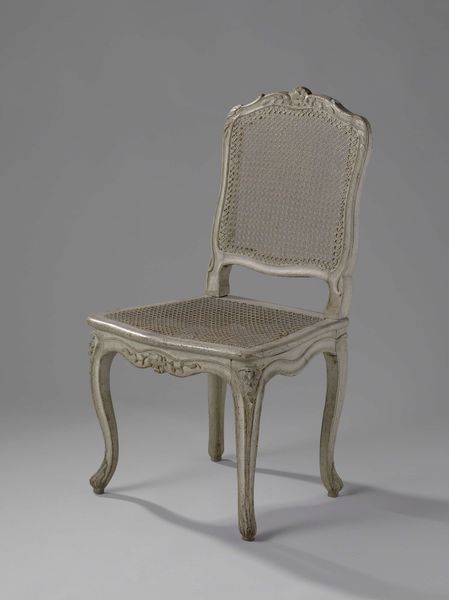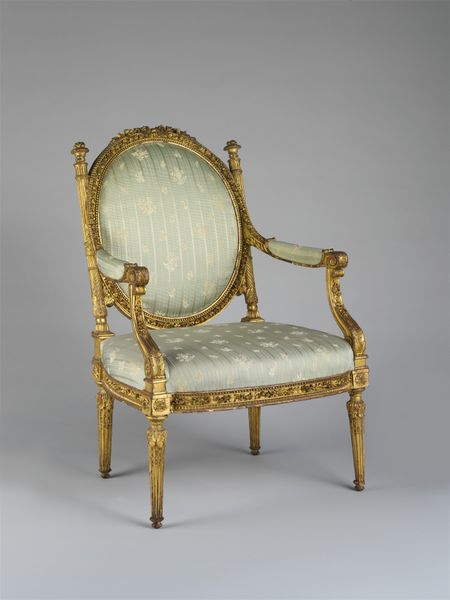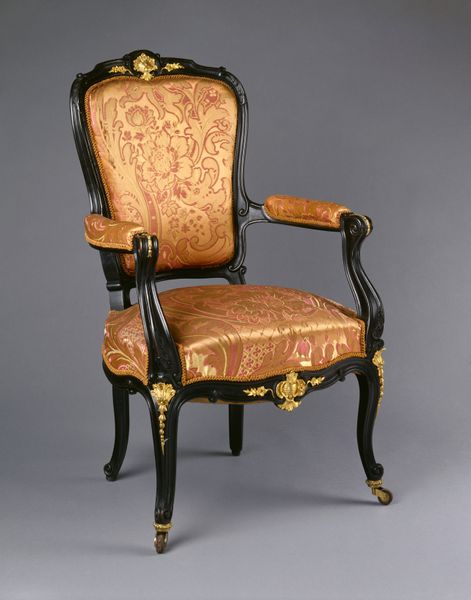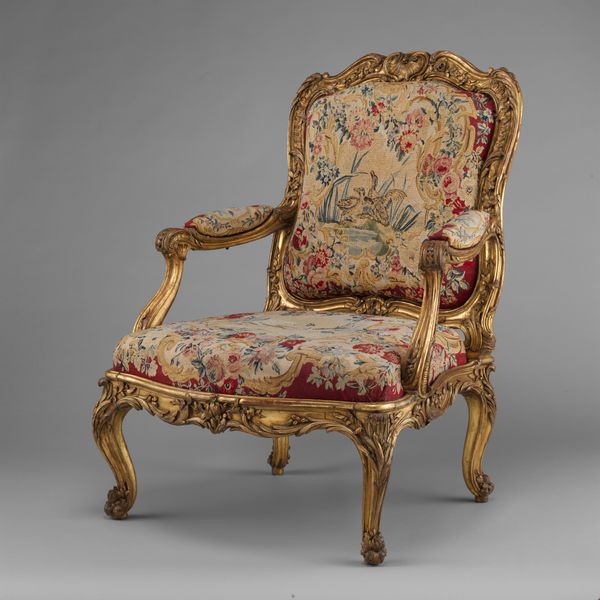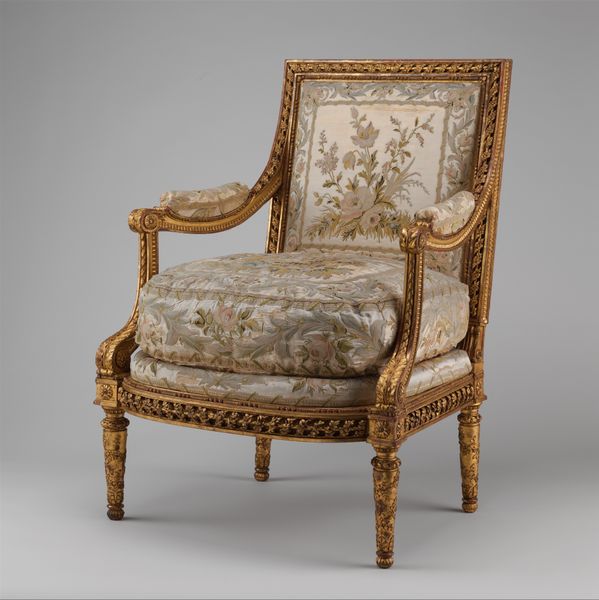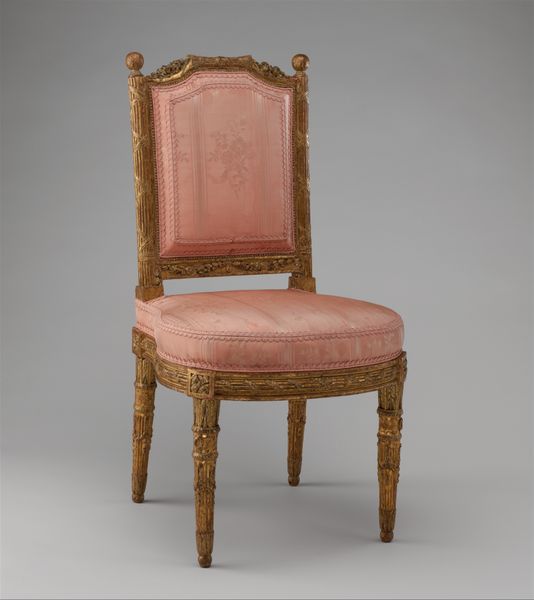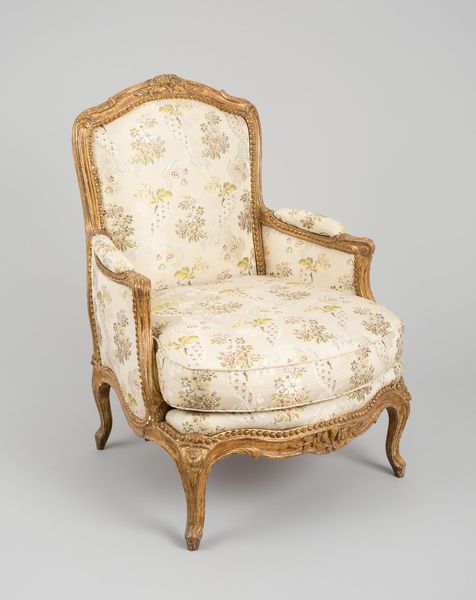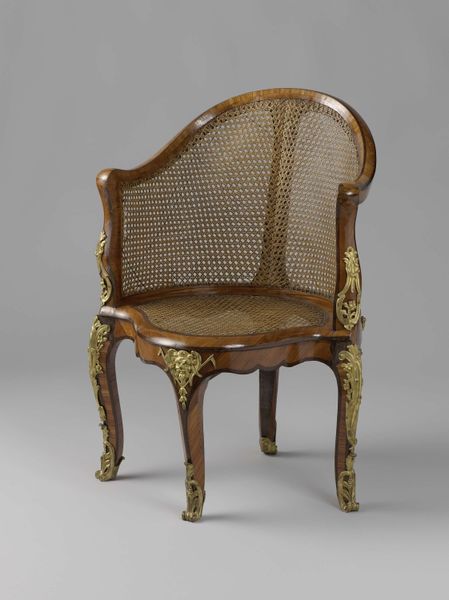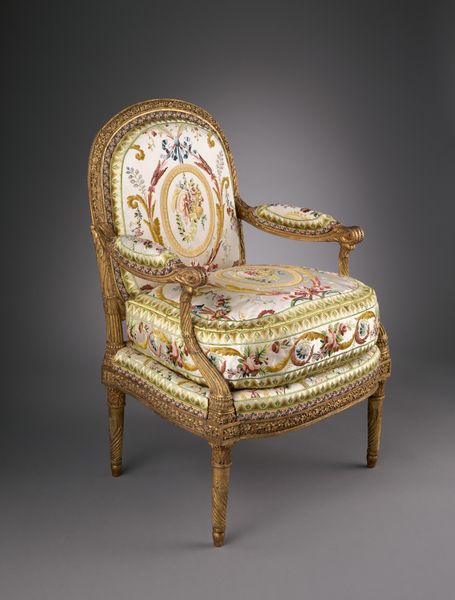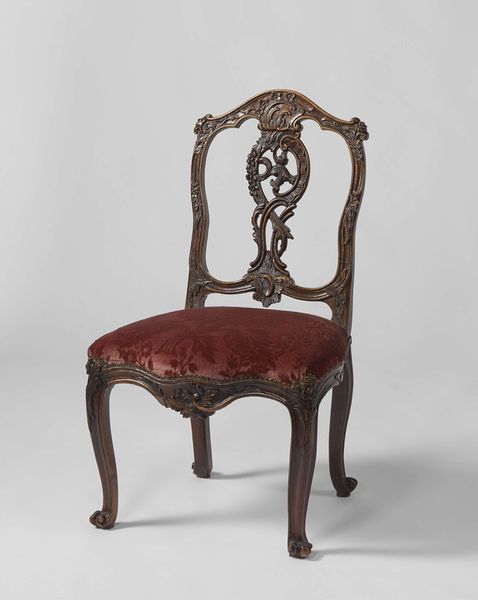
carving, wood
#
portrait
#
neoclacissism
#
carving
#
furniture
#
wood
#
decorative-art
Dimensions: height 88 cm, width 57 cm, depth 65 cm, height 42 cm, depth 49 cm
Copyright: Rijks Museum: Open Domain
Curator: Here we have "Meubilair," furniture created by Georges Jacob sometime between 1775 and 1800. It is an example of Neoclassical design, fashioned from carved wood. Editor: It strikes me as austere, almost unsettling in its muted palette. The straight lines combined with those ornate carvings feel like a constrained tension, wouldn't you say? Curator: Indeed. The motifs - the fluting on the legs, the rosettes – are drawn from classical architecture, signaling a return to order and reason following the more exuberant Rococo period. These elements would have been laden with meaning. Editor: Exactly! This object embodies the values of the Enlightenment: clarity, proportion, rationality. And consider its context. While designed for comfort, such chairs were more about projecting power, reflecting the socio-political hierarchies of pre-Revolutionary France. Curator: These were objects for carefully constructed spaces, stage settings for enacting social rituals. The restrained palette speaks of decorum, subtly referencing classical virtues through their symbolism. Editor: The fabric seat, although faded, whispers of wealth. The color and the delicate texture are very relevant in defining how social classes can perceive that chair now. However, does the Neoclassical obsession with Greek and Roman aesthetics also perpetuate a specific, exclusionary ideal? Is there a flattening, even a form of cultural erasure inherent in simply adopting those symbols without acknowledging diverse voices? Curator: It's true, such visual languages were highly selective, but their impact on design endures. It’s in the details that these voices whisper throughout the generations, each society adding its interpretation. Even the muted quality now adds a layer of emotional response not part of the initial intent, revealing the ephemerality of imposed cultural forms. Editor: Seeing the marks of age, imagining who sat here… the chair becomes more than an artifact. It stands as a silent witness, urging us to critically engage with the complexities of history, power, and representation that underpin our modern environment. Curator: Yes. Its rigid design, paradoxically, becomes a foundation for us to sit upon, a base to propel our evolving perspective on society. Editor: Ultimately, even an object so rooted in a specific historical context allows us to challenge the power structures reflected through decorative items. It helps rewrite, even retroactively, and reinterpret design that represents, in theory, values of diversity.
Comments
No comments
Be the first to comment and join the conversation on the ultimate creative platform.
